
Caterina di Jacopo di Benincasa, TOSD, known as Catherine of Siena, was an Italian Catholic mystic and pious laywoman who engaged in papal and Italian politics through extensive letter-writing and advocacy. Canonized in 1461, she is revered as a saint and as a Doctor of the Church due to her extensive theological authorship. She is also considered to have influenced Italian literature.

Gian LorenzoBernini was an Italian sculptor and architect. While a major figure in the world of architecture, he was more prominently the leading sculptor of his age, credited with creating the Baroque style of sculpture.
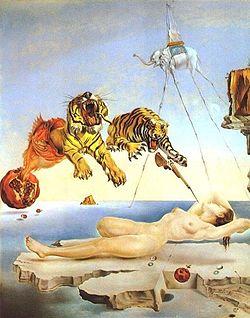
Dream Caused by the Flight of a Bee Around a Pomegranate a Second Before Awakening is a surrealist painting by Salvador Dalí, from 1944. A shorter alternate title for the painting is Dream Caused by the Flight of a Bee. The woman in the painting, dreaming, is believed to represent his wife, Gala, a regular presence in his work. The painting is currently in the Thyssen-Bornemisza Museum, in Madrid.

Santa Maria sopra Minerva is one of the major churches of the Order of Preachers in Rome, Italy. The church's name derives from the fact that the first Christian church structure on the site was built directly over the ruins or foundations of a temple dedicated to the Egyptian goddess Isis, which had been erroneously ascribed to the Greco-Roman goddess Minerva.
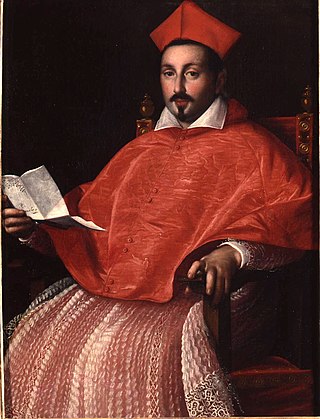
Scipione Borghese was an Italian cardinal, art collector and patron of the arts. A member of the Borghese family, he was the patron of the painter Caravaggio and the artist Bernini. His legacy is the establishment of the art collection at the Villa Borghese in Rome.
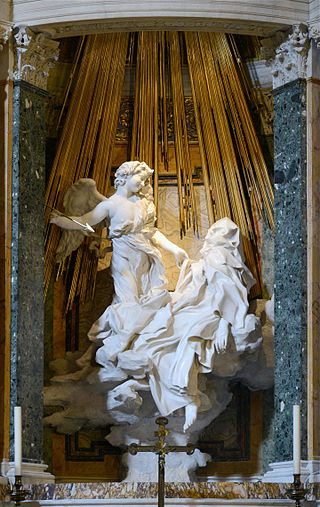
The Ecstasy of Saint Teresa is a sculptural altarpiece group in white marble set in an elevated aedicule in the Cornaro Chapel of the church of Santa Maria della Vittoria in Rome. It was designed and carved by Gian Lorenzo Bernini, the leading sculptor of his day, who also designed the setting of the chapel in marble, stucco and paint. The commission was completed in 1652.
Ercole Ferrata was an Italian sculptor of the Roman Baroque.

The Parish Basilica of Santa Maria del Popolo is a titular church and a minor basilica in Rome run by the Augustinian order. It stands on the north side of Piazza del Popolo, one of the most famous squares in the city. The church is hemmed in between the Pincian Hill and Porta del Popolo, one of the gates in the Aurelian Wall as well as the starting point of Via Flaminia, the most important route from the north. Its location made the basilica the first church for the majority of travellers entering the city. The church contains works by several famous artists, such as Raphael, Gian Lorenzo Bernini, Caravaggio, Alessandro Algardi, Pinturicchio, Andrea Bregno, Guillaume de Marcillat and Donato Bramante.
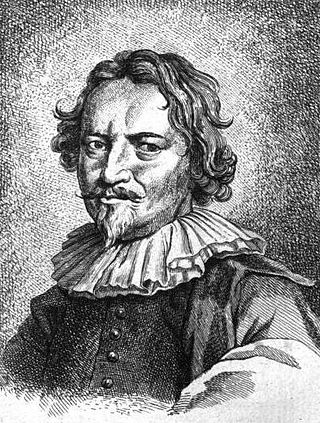
Carlo Fontana (1634/1638–1714) was an Italian architect originating from today's Canton Ticino. He was partly responsible for the classicizing direction taken by Late Baroque Roman architecture.
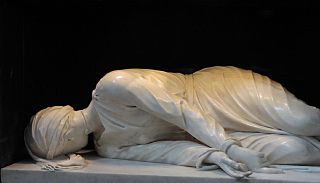
Stefano Maderno was one of the greatest Roman sculptors of the early 17th century.

Santa Maria dei Miracoli and Santa Maria di Montesanto are two churches in Rome.
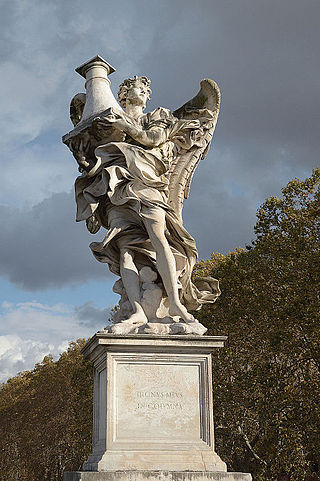
Antonio Raggi (1624–1686), also called Antonio Lombardo, was a sculptor of the Roman Baroque, originating from today's Ticino.

Repubblica–Teatro dell'Opera is an underground station on Line A of the Rome Metro. The station was inaugurated in 1980 and takes its name from the Piazza della Repubblica underneath which it lies.

Piazza della Minerva is a piazza in Rome, Italy, near the Pantheon. Its name derives from the existence of a temple built on the site by Pompey dedicated to Minerva Calcidica, whose statue is now in the Vatican Museums.
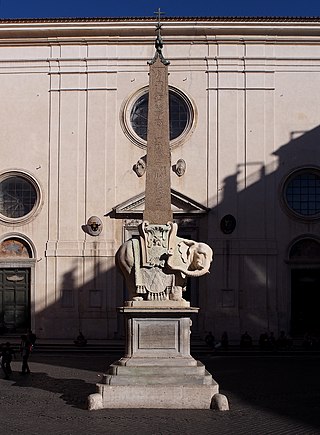
Elephant and Obelisk is a statue of an elephant carrying an obelisk, designed by the Italian artist Gian Lorenzo Bernini. It was unveiled in 1667 in the Piazza della Minerva in Rome, adjacent to the church of Santa Maria sopra Minerva, where it stands today.

Memorial to Maria Raggi is a sculptural monument designed and executed by the Italian artist Gian Lorenzo Bernini, started in 1647 and finished in 1653. The monument is attached to a pillar in a nave of the church of Santa Maria sopra Minerva in Rome.

The bust of Giovanni Vigevano is a marble sculptural portrait by the Italian artist Gian Lorenzo Bernini. The bust was produced between 1617 and 1618, and was then inserted into Vigevano's tomb after he died in 1630. The tomb is in the church of Santa Maria sopra Minerva in Rome.

The Memorial to Alessandro Valtrini is a funerary monument designed by the Italian artist Gian Lorenzo Bernini in 1639, and executed by his workshop in the same year. It is situated in the church of the San Lorenzo in Damaso in Rome. It has strong affinities with the Memorial to Ippolito Merenda; both were undertaken by Bernini's workshop and commissioned by Cardinal Francesco Barberini to commend the ecclesiastical work done by Valtrini and Merenda respectively. In aesthetic terms, both broke new ground in figuring Death as a moving skeleton carrying a flowing inscriptions and, in the case of Alessandro Valrtrini monument, a medallion-shaped portrait of Valtrini himself.

Noli Me Tangere is a large sculptural arrangement that forms part of the Alaleona Chapel in the church of Santi Domenico e Sisto, in Rome.
Raggi is a surname and may refer to:


















